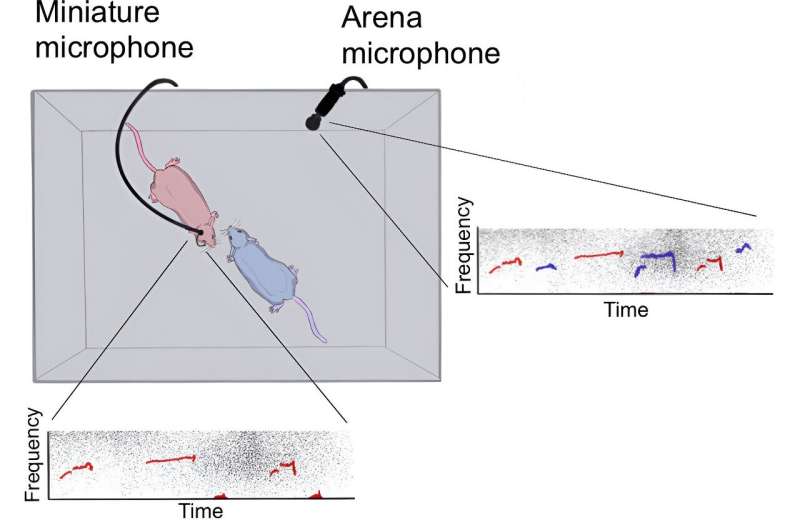November 14, 2023 report
This article has been reviewed according to Science X's editorial process and policies. Editors have highlighted the following attributes while ensuring the content's credibility:
fact-checked
peer-reviewed publication
trusted source
proofread
Using miniature microphones to record rat's happy squeaks

A team of neurobiologists at the University of Haifa's, Sagol Department of Neurobiology has found, via the use of novel miniature microphones, that rats make sounds when in the company of other rats for no other reason than because they are happy. In their study, published open access in the journal Cell Reports Methods, the group conducted experiments that involved inserting tiny microphones into the noses of domesticated rats.
Prior research has shown that rats are extremely social with one another. They have been found to prefer social interactions over food, in some cases, and are known to exhibit "excited" behavior when a nearby rat is tickled. Prior research has also shown that groups of caged rats emit high-pitched squeaks when happy and lower-pitched sounds when they are not. Some in the field have suggested this behavior is similar to the high-pitched barking of happy dogs versus their low growling when angry.
Up to now, research into the high-pitched, happy rat squeaking has involved recording groups of happy rats, which does not allow for identifying which rats are emitting which squeaks.
In this new effort, the research team took a different approach—they surgically inserted tiny, tube-shaped microphones into the snouts of a group of rats, waited for the incisions to heal and then allowed them to socialize. The researchers were able to listen and record the squeaks made by individual rats under a variety of circumstances.
One such circumstance involved placing two rats in a cage with a dividing mesh, and then repeating the exercise without the mesh. They found that the rats were much more likely to emit the high, happy squeak when there was no mesh, allowing them to touch one another.
In studying the audio/video recordings of the rats, the research team found that they tended to make high-pitched noises when placed together regardless of what was occurring—a finding that suggests they sometimes squeak for no reason other than to express their happiness.
The researchers also found that the rats emitted a type of soft squeak at a low frequency that had not been heard before. They only produce the sound when together, but not when humans are present; the research team was not able to identify its purpose. They also found that, contrary to prior research results, female rats squeak just as much as male rats.
More information: Shanah Rachel John et al, Simultaneous recording of ultrasonic vocalizations and sniffing from socially interacting individual rats using a miniature microphone, Cell Reports Methods (2023). DOI: 10.1016/j.crmeth.2023.100638
Journal information: Cell Reports Methods
© 2023 Science X Network




















